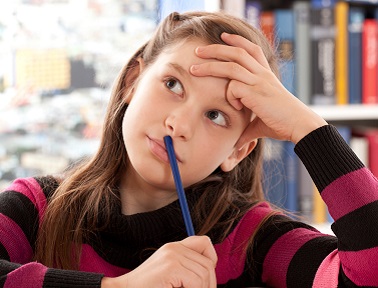 Last August, a friend of mine traded her early elementary teaching job in Austin, Tex. for a similar position at an international school in Bangalore. In a recent Facebook post, she mused on one key difference between her past educational experiences — as both a student and teacher — and those of the children with whom she currently works:
Last August, a friend of mine traded her early elementary teaching job in Austin, Tex. for a similar position at an international school in Bangalore. In a recent Facebook post, she mused on one key difference between her past educational experiences — as both a student and teacher — and those of the children with whom she currently works:
In a way, I am so envious of the kids at my school. They are taught to question everything from the get go–it’s a central part of our curriculum! With every source they encounter, they use and analyze with OPVL (what is the origin, purpose, value, and limitation of the source). Can you imagine how smart we would be if we had been offered the same education as kids?
Her post struck me for a number of reasons. On a philosophical level, OPVL embodies an educational approach that stresses the inherent value of questioning, affirming the ability of even very young children to critique (rather than passively accept) the materials and information presented to them. On a practical level, the method offers a simple yet systematic way to unpack everything from historical primary sources to current news events.
In International Baccalaureate (IB) settings — where the technique is commonplace — teachers encourage OPVL from early childhood classrooms on through high school.
Younger students, for example, wield it to answer factual questions about a specific document, setting the foundation for the more sophisticated queries they’ll undertake as they advance academically. In this way, OPVL provides a flexible scaffold that grows with students, accommodating their development as they move from concrete to abstract thought.
So how do you get your students to sharpen their critical thinking skills with OPVL? Here’s a quick rundown to get you started.
STEP 1: Analyze a text’s origins
The first step of the process asks students to imagine the author. Younger children are more than capable of posing these initial, document-based questions, which encourage them to recognize all media as subjective.
Begin by debating whether the work is a primary or secondary source. Was it created at the time of the event it describes by someone who was at the scene (e.g., a letter, photo, journal entry, speech, painting, or interview)? Or was it produced with the benefit of hindsight (e.g., a textbook)?
While categorizing sources can be tricky, it presents an opportunity to reflect on the context in which the words or images were produced. During this phase, remind students that primary isn’t necessarily preferred over secondary — each type of source offers different information that may clarify or complicate the other.
After identifying the document as primary or secondary, consider these “W” questions suggested by the Minnesota Humanities Center, an NEH-affiliated nonprofit that sponsors school programs aimed at increasing literacy, community engagement, and academic achievement:
- Who created it?
- When and where was it created?
- Who published it and where?
- What do we know about the author that is pertinent to our evaluation?
STEP 2: Consider the purpose
With this information in place, unleash another cascade of “W” questions. Make sure that your students focus on the text itself by posing questions such as why might this document exist, who was the intended audience, and what does the document “say”?
Strive to have students support their claims by pointing to specific evidence in the work.
STEPS 3 and 4: Find the strengths and weaknesses
The last two steps of OPVL, which discuss the document’s value and limitations, invite more complex analysis and require in-depth knowledge of the period in which the piece was created.
In step three, ask what value this document has as evidence. This requires students to evaluate the work in relation to its specific time and place. Students bring in their knowledge of the author and period, noting ways in which the text might be colored by contemporary circumstances, controversies, and events.
Finally, in step four, ask about the source’s weaknesses. What does it leave out? Are there any obvious inaccuracies? Can the author’s claims be verified, and if so, how?
Depending on the readiness of students, you may wish to postpone these larger discussions of the document’s strengths and weaknesses until the class has perfected the foundational first two steps of the OVPL process, steps sure to serve them well as they grow as citizens and scholars.
Resources:
For more on the importance of critical thinking in the classroom for early grades, visit the National Council for the Social Studies website. The report “Social Studies for Early Childhood and Elementary School Children: Preparing for the 21st Century,” proves as relevant today as when it was written nearly 25 years ago.
Several websites feature guides to using OPVL in the classroom, including the Minnesota Humanities Center.

